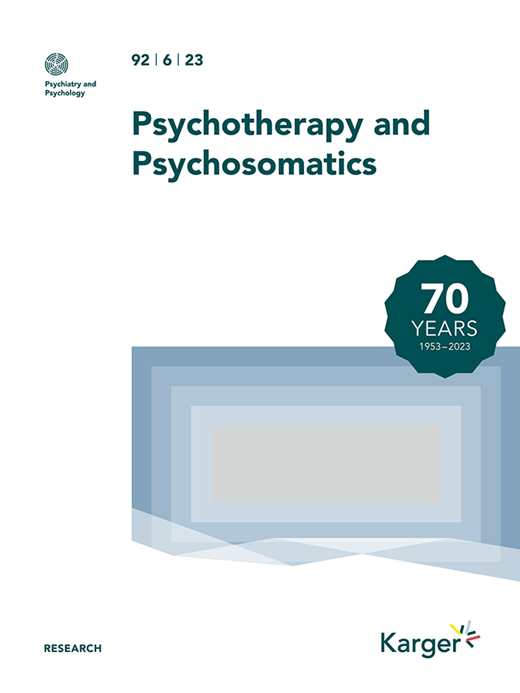更多的治疗,但没有减少焦虑和情绪障碍:为什么?七个假设及其评价。
IF 16.3
1区 医学
Q1 PSYCHIATRY
引用次数: 1
摘要
本文章由计算机程序翻译,如有差异,请以英文原文为准。
More Treatment, but Not Less Anxiety and Mood Disorders: Why? Seven Hypotheses and Their Evaluation.
Mood and anxiety disorders are not only common and responsible for much functional disability [1], but epidemiological studies also indicate that their prevalence, circa 10% in Western countries, has not fallen since the 1970s despite the development of evidence-based treatments [2–8]. Prevalence refers to the percentage of adults in the general population that meet diagnostic criteria in a defined period, usually the 30 days (point prevalence) or 12 months (12-month prevalence) preceding the examination irrespective of possible earlier episodes. In sharp contrast, multiple studies have documented substantial increases in expenditures on mental health care and in treatment rates in Western countries [9–15]. The evidence on increased treatment rates comes from both general practice [16–18], nation-wide morbidity registrations [19, 20], and repeated population-based surveys [8, 21]. The treatment rate increase was bolstered by the introduction of a new class of drugs in the 1980s, the selective serotonin reuptake inhibitors, aggressively marketed by Big Pharma [22]. In addition, a number of evidence-based psychological treatments became available for people with mood and anxiety disorders. The trend data on prevalence and treatment rate reveal a remarkable paradox: more treatment but not less disorders, the treatment-prevalence paradox. The expectation to see a declining trend in the prevalence of mood and anxiety disorders with an increasing trend in treatment is not unfounded. Treatment seeks to shorten illness episodes, prevent worsening and the development of comorbidity, reduce relapses and curtail recurrences. If effective, increased treatment rates should result in lower prevalence rates in the general population, but this prevalence reduction has not occurred. The increase in the use of statins has led to significant reduction in population cholesterol levels [23]. Likewise, more and better treatment of hypertension has led to less hypertension and associated illness such as heart attacks and strokes illness [24, 25]. At least seven hypotheses can explain why more and better treatments have not reduced common mental disorder prevalence: 1. Increased willingness of individuals to report symptoms and pressures to diagnose distress as anxiety or depression has inflated prevalence rates and masked a true treatment-driven prevalence drop (further: diagnostic inflation).
求助全文
通过发布文献求助,成功后即可免费获取论文全文。
去求助
来源期刊

Psychotherapy and Psychosomatics
医学-精神病学
CiteScore
29.40
自引率
6.10%
发文量
46
期刊介绍:
Psychotherapy and Psychosomatics is a reputable journal that has been published since 1953. Over the years, it has gained recognition for its independence, originality, and methodological rigor. The journal has been at the forefront of research in psychosomatic medicine, psychotherapy research, and psychopharmacology, and has contributed to the development of new lines of research in these areas. It is now ranked among the world's most cited journals in the field.
As the official journal of the International College of Psychosomatic Medicine and the World Federation for Psychotherapy, Psychotherapy and Psychosomatics serves as a platform for discussing current and controversial issues and showcasing innovations in assessment and treatment. It offers a unique forum for cutting-edge thinking at the intersection of medical and behavioral sciences, catering to both practicing clinicians and researchers.
The journal is indexed in various databases and platforms such as PubMed, MEDLINE, Web of Science, Science Citation Index, Social Sciences Citation Index, Science Citation Index Expanded, BIOSIS Previews, Google Scholar, Academic Search, and Health Research Premium Collection, among others.
 求助内容:
求助内容: 应助结果提醒方式:
应助结果提醒方式:


